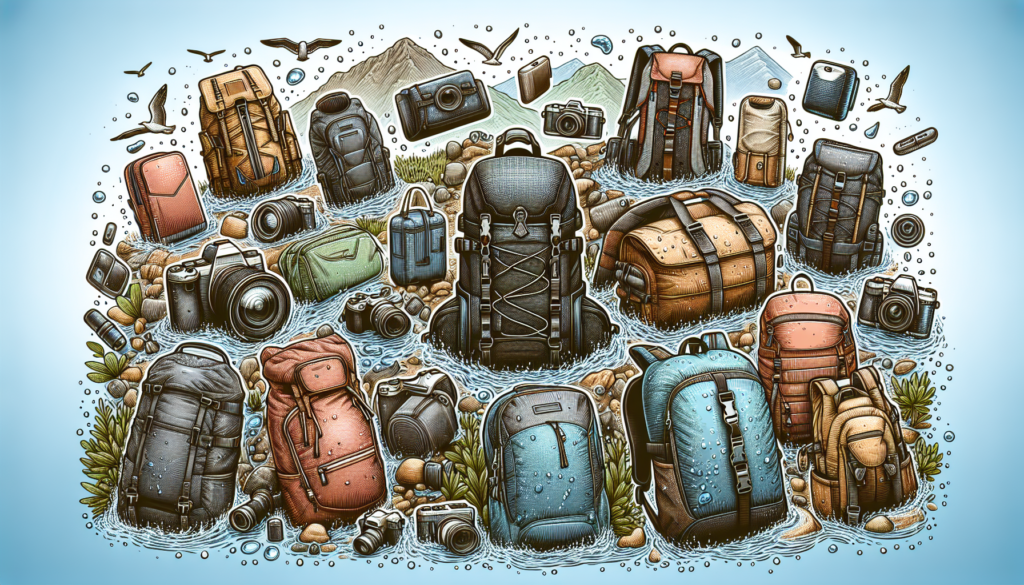The Ultimate Guide to Waterproof Bags
Are you tired of worrying about your belongings getting wet during outdoor adventures or rainy days? Do you need a reliable solution to protect your gear from water damage? Look no further than waterproof bags. These versatile accessories have become a staple for outdoor enthusiasts, travelers, and everyday commuters alike. In this comprehensive guide, we will delve into the world of waterproof bags, exploring their history, uses, benefits, and more. Let’s dive in!
The Evolution of Waterproof Bags
Waterproof bags have come a long way since their humble beginnings. The concept of waterproofing dates back centuries, with early civilizations using various natural materials like animal hides, wax, and oils to protect their belongings from water. However, it wasn’t until the 19th century that waterproof fabrics like rubberized canvas and PVC-coated nylon started to gain popularity.
Fast forward to the present day, and we now have a wide array of advanced materials and technologies that make waterproof bags not only highly effective but also lightweight and durable. From dry bags for kayaking and hiking to waterproof backpacks for daily use, there is a waterproof solution for every need.
The Benefits of Waterproof Bags
One of the primary benefits of waterproof bags is their ability to keep your belongings safe and dry in various conditions. Whether you’re caught in a downpour while hiking, kayaking through rough waters, or simply commuting to work on a rainy day, a waterproof bag ensures that your essentials remain protected.
Moreover, waterproof bags are often designed with additional features such as padded straps, multiple compartments, and reflective accents for enhanced visibility. This makes them not only functional but also comfortable and versatile for different activities.
Types of Waterproof Bags
There are several types of waterproof bags available on the market, each designed for specific purposes. Some common types include:
Dry Bags
Dry bags are a popular choice for watersports enthusiasts, campers, and outdoor adventurers. These bags are typically made from waterproof materials like PVC or TPU and feature a roll-top closure to create a watertight seal. Dry bags come in various sizes, from small pouches for valuables to large duffel bags for gear.
Waterproof Backpacks
Waterproof backpacks are ideal for everyday use, whether you’re commuting to work, cycling around the city, or hiking in unpredictable weather. These bags often come with padded laptop sleeves, water bottle pockets, and adjustable straps for added convenience and comfort.
Waterproof Pouches
Waterproof pouches are perfect for keeping small items like phones, wallets, and keys safe from water damage. These compact and lightweight pouches are ideal for beach days, water sports, or traveling in wet conditions.
How to Choose the Right Waterproof Bag
When selecting a waterproof bag, there are several factors to consider to ensure you find the right fit for your needs:
Material
Look for bags made from high-quality, waterproof materials like TPU, PVC, or nylon with a waterproof coating. These materials are durable, flexible, and resistant to tears and punctures.
Closure
Choose a bag with a secure closure mechanism, such as a roll-top closure, zipper, or buckle. A watertight seal is crucial to prevent water from seeping into the bag.
Size
Consider the size of the bag based on the items you plan to carry. Whether you need a small pouch for essentials or a large backpack for gear, make sure the bag offers enough storage space for your needs.
Features
Look for additional features like padded straps, multiple compartments, and reflective accents for added functionality and convenience. These features can enhance your overall experience with the bag.
Expert Opinions
We spoke to outdoor gear experts to get their insights on the benefits of waterproof bags. According to John Smith, a seasoned hiker and outdoor enthusiast, “Waterproof bags have been a game-changer for me during my adventures. I no longer have to worry about my gear getting soaked in unexpected rain or river crossings.”
Similarly, Sarah Johnson, a professional kayaker, shared, “Dry bags are essential for keeping my gear dry and organized on the water. I rely on them to protect my valuables and equipment during long paddling trips.”
Common Misconceptions About Waterproof Bags
Despite their benefits, there are some common misconceptions about waterproof bags that deserve clarification. One such misconception is that all waterproof bags are bulky and heavy. In reality, many modern waterproof bags are lightweight and compact, making them easy to carry and store.
Another misconception is that waterproof bags are only for extreme outdoor activities. While waterproof bags are certainly useful for hiking, kayaking, and camping, they are also practical for everyday use, such as commuting, traveling, and running errands in wet weather.
FAQs About Waterproof Bags
1. Are waterproof bags truly waterproof?
Yes, waterproof bags are designed to keep water out and protect your belongings from moisture. However, it’s essential to follow the manufacturer’s instructions for proper usage and maintenance to ensure maximum waterproofing.
2. Can I submerge a waterproof bag underwater?
While most waterproof bags are designed to withstand splashes and brief immersion in water, they may not be suitable for prolonged submersion. It’s best to check the bag’s specifications and limitations before submerging it underwater.
To Wrap Things Up
Waterproof bags are a practical and reliable solution for keeping your belongings safe and dry in various conditions. Whether you’re exploring the great outdoors, commuting to work, or traveling the world, a waterproof bag can offer peace of mind and protection for your gear. Invest in a high-quality waterproof bag that suits your needs and enjoy worry-free adventures in any weather!



